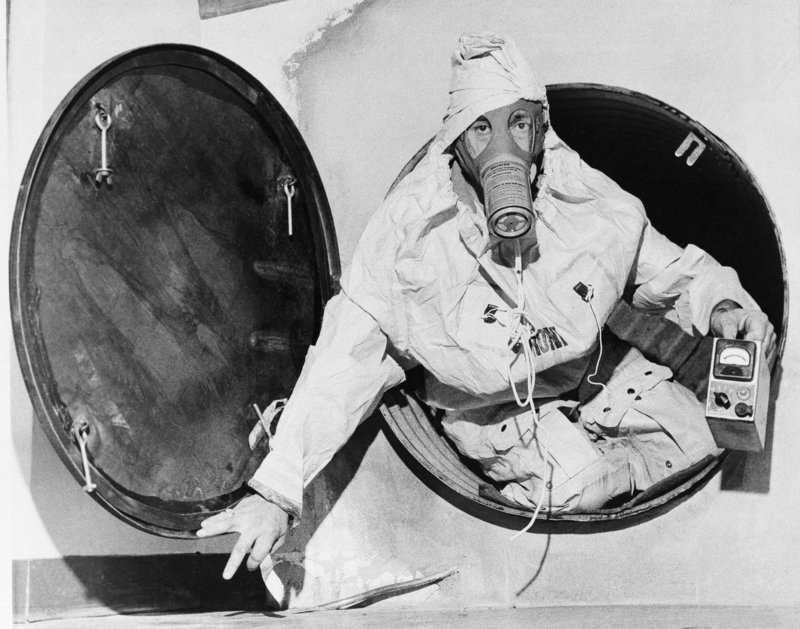STANDISH – Call it “Red October.”
Fifty autumns ago, the United States and the Soviet Union trysted in a game of deadly brinkmanship as the Russians installed nuclear warheads pointed toward the United States, a mere 90 miles from American soil, in Cuba. Fidel Castro, who had come to power in a revolution three years earlier, agreed to assist Soviet Premier Nikita Khrushchev in a showdown with the United States.
It was President John F. Kennedy’s defining moment: In a game of chicken that could have left much of the world fried, Khrushchev backed down. Collective relief filled the skies on Saturday, Oct. 27, which marked a crucial turning point in the 13-day crisis — but not before tensions reached a cataclysmic level.
Although just a schoolgirl, I was acutely aware of the drama that was playing out in the Caribbean.
On the glorious fall morning of Oct. 23, 1962, when life should have been celebrated and not potentially eliminated, I awaited my school bus, wondering if this would be our last day on Earth. I recall wearing my favorite dress, a deep magenta one with tiny rosebuds around the collar.
I chose it on purpose.
Perhaps my heightened perception of events playing out in Cuban waters was due to my exposure to the weird realm of civil defense.
My father, Maine State Police Capt. John E. Marks, was a civil defense coordinator who pressed area residents to prepare freshly stockpiled fallout shelters in their basements. He also, like a latter-day Johnny Appleseed, spread red triangular radioactivity warning signs for all to see.
The thought of our 1813 cellar as a place to wait out nuclear contamination was not a glowing thought.
My weekly contribution to the operation was replacing the water and the cat food. Spending intimate time with Pepper, an ugly, semi-domesticated bobcat-Manx mix, was almost as daunting as a Red alert itself. Generations of spider webbing didn’t add to the ambiance, either.
What led to this moment of brinkmanship between Khrushchev and Kennedy?
Over the past year and a half, from April 1961 to October 1962, relations between the nuclear giants had reached their breaking point.
Perhaps the nadir of Kennedy’s foreign policy was the infamous Bay of Pigs invasion, a fiasco on many levels. A covert operation, the invasion of Cuba, it was hatched and supported by the U.S. military and the CIA and used a small force of Cuban exiles to land on the island in April.
It failed badly. Perhaps the ultimate blow– in addition to poor terrain and limited American air cover — was the failure of the exiles’ fellow Cubans to rise up against Castro.
Fresh off the Bay of Pigs humiliation, Kennedy met with Khrushchev in early June 1961 at the Vienna Summit; the subject was post-war Germany. President Kennedy was in chronic pain during the summit, and Khrushchev read him as weak.
While the two leaders clashed over Berlin, which would see a Soviet wall erected in East Berlin two months later, the Russian premier committed one of the greatest errors in politics: He underestimated his opponent.
Tensions flared that summer of 1961, highlighted by American and Russian tanks facing down each other at the newly erected wall. The Berlin Crisis accelerated to the point where Kennedy called up reservists.
It was during these alarming times that my father received yet another civil defense appropriation — a reconfigured World War II amphibious vehicle on wheels, painted steel blue with civil defense insignia lacquered on its sides. It was joined by a police scanner installed in our kitchen that groaned nonstop.
Per instructions, Dad would crank up “The Thing” periodically and test it on Route 1, to the dismay of motorists stuck behind it at 10 mph. He rather seemed to enjoy it.
But the Cold War’s highest military alert was issued in October 1962, during the Cuban missile crisis.
During October, Russian ships were busily transporting nukes to Castro’s Cuba and positioning them toward the United States.
In a dramatic televised address on the evening of Oct. 22, Kennedy announced a U.S. naval blockade around Cuba. The deadly ante was upped.
On Saturday, Oct. 27, it was Khrushchev who ultimately blinked. Soviet ships heading for Cuba turned around, and a deal was subsequently struck: The Russians would pull their missiles, and the United States would not invade Cuba. A potential nuclear war had been averted.
The following Monday, Oct. 29, my wait for the bus was decidedly different. The showdown appeared to be over, and my best dress was relegated to the closet for a happier event.
“The Thing” was eventually retired, a novelty parked behind Thomaston’s Troop D State Police Barracks for some years. Dad seemed to miss it — likely the only person this side of Russia to do so.
Morning had indeed come to Maine.
Karen Marks Lemke is an associate professor of education at Saint Joseph’s College.
Send questions/comments to the editors.



Success. Please wait for the page to reload. If the page does not reload within 5 seconds, please refresh the page.
Enter your email and password to access comments.
Hi, to comment on stories you must . This profile is in addition to your subscription and website login.
Already have a commenting profile? .
Invalid username/password.
Please check your email to confirm and complete your registration.
Only subscribers are eligible to post comments. Please subscribe or login first for digital access. Here’s why.
Use the form below to reset your password. When you've submitted your account email, we will send an email with a reset code.